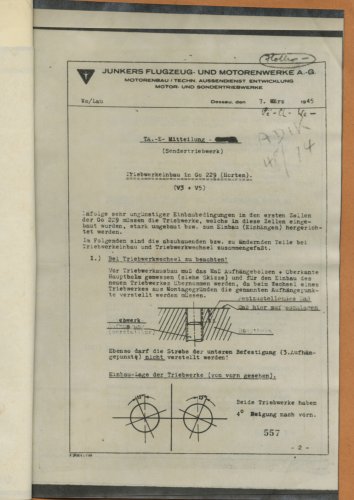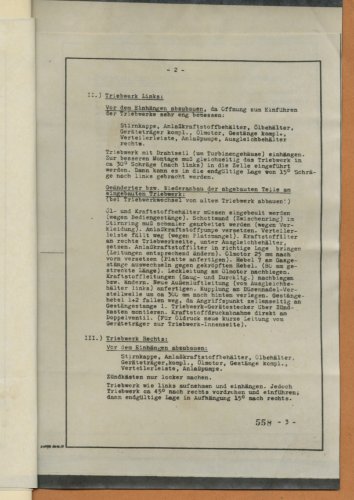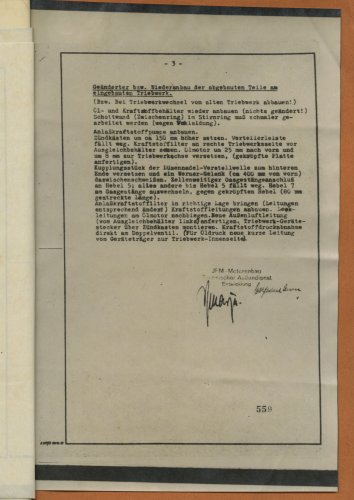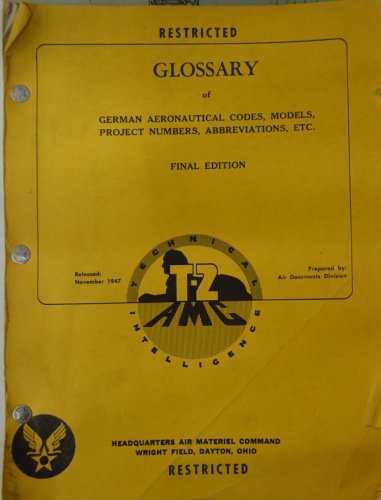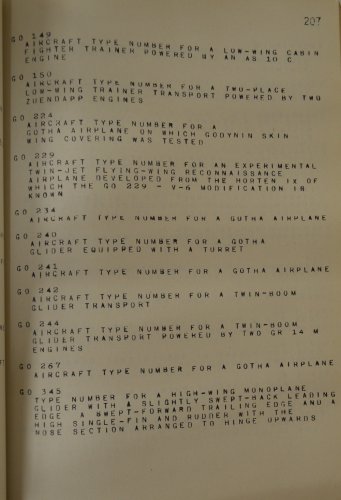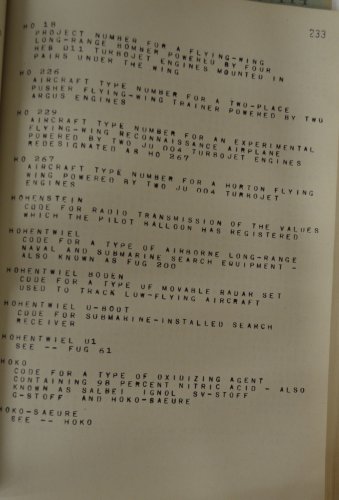- Joined
- 28 January 2008
- Messages
- 635
- Reaction score
- 511
I have been collating my notes on Gotha aircraft recently and thought I would share the results.
It is by no means comprehensive (many projects in the P series missing) but it might provide a starting point for additional information from other members.
Broken down into four posts, which follow.
Gothaer Waggonfabrik
Gothaer Waggonfabrik (Gotha, GWF) was a German manufacturer of railway rolling stock established in the late nineteenth century at Gotha, now in Thuringia, Germany. During the two world wars, the company expanded into aircraft building.
The Gotha Taube was a variation of the Etrich Taube and was made by the GWF concern as the Land Eindekker (LE) series of monoplanes.
In World War I, Gotha was the manufacturer of a highly successful series of bombers based on a 1914 design by Oskar Ursinus. From 1917, these aircraft were capable of carrying out strategic bombing missions over England, the first heavier-than-air aircraft used in this role. Several dozen of these bombers were built in a number of subtypes - the Gotha G.I, G.II, G.III, G.IV, and G.V. This last variant was the most prolific, with thirty-six in squadron service at one point.
Whilst Germany was prohibited from military aircraft manufacture by the Treaty of Versailles, Gotha returned to its railway endeavours, but returned to aviation with the rise of the Nazi government and the abandonment of the Treaty's restrictions.
In 1921 the company purchased Automobilwerk Eisenach, thereby entering automobile production and, with the Dixi models playing an important part in expanding the German auto-market. However, the company encountered a cash crisis in 1928 and the Dixi branded auto-business was sold to BMW: the Dixi 3/15 DA-1 was rebadged in 1928 as the BMW 3/15 DA-2, the name by which today the little car is better remembered.
In 1924 the Cyklon Maschinenfabrik, a manufacturer that had concentrated on motor-bikes and cycle cars came, through a rather indirect route of company purchases and sales, to be merged into the larger Gothaer Waggonfabrik to become a serious car producer. The sale by Gothaer Waggonfabrik of the cash-strapped Dixi business to BMW meant an end to Cyklon's access to a sales network, and highlighted the lack of cash for running the auto-business which rapidly fizzled out after 1928, although Cyklon was not formally wound up till 1931.
Gotha's main contribution to the new Luftwaffe was the Gotha Go 145 trainer, of which 1,182 were built. The firm also produced the Gotha Go 242 assault glider and licence-built Messerschmitt Bf 110. Perhaps the most famous Gotha product of World War II, however, was an aircraft that never entered service, the Horten Ho 229. This was an exotic jet-powered, flying wing fighter aircraft designed by the Horten brothers, who lacked the facilities to mass-produce it. Two prototypes flew, the second (powered) version lost in an accident on its third flight. the third prototype- built to a modified design - was almost complete and four more were in various stages of manufacture before the end of the war.
Following the war, Gotha once again returned to its original purpose, building trams and light rail vehicles in the former East Germany.
Gotha aircraft included:
Gotha Büchner 4-Bay Biplane - 1913 - This machine was built by the Gothaer Waggonfabrik AG, Abteilung Flugzeugbaur, Gotha in 1913 as a trainer (Schuldoppeldecker) for the German Marine by one of the designers of Gotha, Dipl-Ing. Bruno Büchner. Power was provided by an Argus engine, driving a two bladed propeller. The first flight was on 22nd April 1913 and three were built. -
Gotha Büchner 6-Bay Seaplane (Wasserflugzeug) - 1913 - This was a large 6-bay machine was powered by a 120 hp Daimler D II engine. The aircraft first took to the air in April 1913. Took part in the Konstanz Bodensee-Wasserflug 1913. For the competition 17 different aircraft were entered, but not all of them appeared. One of the machines that appeared was the Gotha Wasserflugzeug, which was piloted by its designer Bruno Büchner. The engine was quoted as a 100 hp Mercedes 6-cylinder engine with steel cylinders. The aircraft did not win any prizes in Konstanz with the first prize to Hellmut Hirth who was flying an Albatros Monoplane seaplane, designed by a young designer named Ernst Heinkel. -
Gotha B.I - 1914 - see Gotha LD.7 -
Gotha B.II - 1915 - see Gotha LD.10 -
Gotha FU - 19?? - see Gotha G.I -
Gotha G.I - 1914 - Designing began in the middle of 1914 for a large twin-engine seaplane of unconventional configuration. While most biplane designs have the fuselage attached to the lower wing, the G.I had a snub-nosed fuselage attached to the upper wing, and twin engine nacelles mounted on the lower one to minimize asymmetrical thrust in the event of an engine failure. Power was provided two Benz Bz.III inline engines, 110 kW (150 hp) each. Designed by Oskar Ursinus and Helmut Friedel its first flight was on 30 January 1915. A single example of the UWD floatplane version of the G.I was also built, ordered by the Navy in April 1915, and delivered in February 1916. The UWD seaplane is known to have participated in a successful air-raid on Dover in 1916, bombing Langton Fort and the Shoulder of Mutton battery. -
Variants: -
FU - (Friedel-Ursinus) - single prototype -
G.I - standard production version -
UWD - (Ursinus Wasser Doppeldecker - Ursinus Water Biplane) - seaplane variant with twin floats (1 only built), also known as the WD.4 -
Gotha G.II - 1915 - The Gotha G.II series was a heavy bomber biplane designed by Hans Burkhard. He abandoned the G.I's unorthodox configuration in favor of a more conventional design with the fuselage mounted on the bottom wing rather than the top. The G.II carried a crew of three and a defensive armament of two machine guns. The forward section of the fuselage was skinned in plywood, with the remainder covered in fabric. The fuselage and two very large nacelles were mounted on the lower wing. Each nacelle contained fuel and oil tanks beneath a geared eight-cylinder 160 KW (220 hp) Mercedes D.IV engines driving pusher propellers. The undercarriage was unusual, being quadricycle in arrangement with a pair of wheels mounted at the front and rear of each engine nacelle. The G.II prototype first flew in March 1916, and testing revealed it did not meet the Idflieg requirements. It was changed from a two-bay to a three-bay structure, undercarriage arrangement improved and production commenced in April 1916. Initial production batch of 11, mostly deployed to the Balkan front. Engine: 2 × Mercedes D.IV inline engine, 164 kW (220 hp) each.
Gotha G.III - 1916 - The Gotha G.III was a heavy bomber and it succeeded the G.II in production and differed primarily in the choice of powerplant. The Mercedes D.IV, which had proven highly susceptible to crankshaft failure, was replaced by a pair of the new six-cylinder 190 kW (260 hp) Mercedes D.IVa engine. The G.III also had a strengthened fuselage with an extra ventral machine gun. The G.III was also the first bomber to have a tail gun with a 360 degree arc of fire.
Gotha G.IV - 1916 - The Gotha G.IV was a heavy bomber used by the Luftstreitkräfte (Imperial German Air Service) during World War I. Experience with the earlier G.III showed that the rear gunner could not efficiently operate both the dorsal and ventral positions. Hans Burkhard's ultimate solution was the “Gotha tunnel”, a trough connecting an aperture in the upper decking with a large opening extending across the bottom of the rear fuselage. The Gotha tunnel allowed the top-side gun to fire through the fuselage at targets below and behind the bomber. The G.IV introduced other changes. The fuselage was fully skinned in plywood, eliminating the partial fabric covering of the G.III, the the plywood skinning enabled the fuselage to float for some time in the event of a water landing. In November 1916, the firm received a production order for 35 aircraft and this was subsequently increased to 50 in early 1917. A further 80 aircraft were ordered from the Siemens-Schuckert Werke (SSW) and 100 from Luft-Verkehrs-Gesellschaft (LVG). Compared to the Gothaer aircraft, these license-built aircraft were slightly heavier and slower because Idflieg specified the use of a strengthened airframe. Powerplant: 2 × Mercedes D.IVa, 193 kW (260 hp) each.
Gotha G.V - 1917 - The Gotha G.V was a long-range heavy bomber used by the Luftstreitkräfte (Imperial German Air Service) during World War I, principally as night bombers. Operational use of the G.IV demonstrated that the incorporation of the fuel tanks into the engine nacelles was a mistake. The Gotha G.V pilot seat was offset to port with the fuel tanks immediately behind. This blocked the connecting walkway that previously on earlier machines allowed crew members to move between the three gun stations. All bombs were carried externally in this model. The Gotha included an important innovation in the form of a "gun tunnel" whereby the underside of the rear fuselage was arched, early versions allowing placement of a rearward-facing machine gun protecting from attack from below, removing the blind spot. The base variant of G.V offered no significant performance improvement over the G.IV. The Mercedes D.IVa engines could not produce the rated 190 kW (260 hp) due to inferior quality of fuel. The G.V entered service in August 1917.
Variants:
G.Va - In February 1918, Gothaer tested a compound tail unit with biplane horizontal stabilizers and twin rudders. The new tail unit, known as the Kastensteuerung, improved the aircraft's marginal directional control on one engine. The resulting G.Va subvariant incorporated the new tail as well as a slightly shorter forward fuselage with an auxiliary nose landing gear. All 25 G.Va aircraft were delivered to Bogohl 3.
G.Vb - Carried an increased payload comparing to the earlier G.Va. Gothaer introduced the Stossfahrgestell ("shock landing gear"), a tandem two-bogie main landing gear. Some G.Vb aircraft also had Flettner servo tabs on the ailerons to reduce control forces. Idflieg ordered 80 G.Vb aircraft, the first being delivered to Bogohl 3 in June 1918. By the Armistice, all 80 aircraft were built but the last batch did not reach the front and was delivered direct to the Allied special commission. 2 × Mercedes D.IVa inline engine, 260 hp (191 kW) each.
Gotha G.VI - 1918 - The Gotha G.VI was an experimental bomber developed from the Gotha G.V . The G.VI became what was probably the first asymmetrical aircraft to be built. Designer Hans Burkhard on September 22, 1915, Burkhard obtained German Patent number 300 676 for his unusual design. Using the wing from a Gotha G.V Burkhard moved an engine to the front of the fuselage, driving a tractor propeller, and moved it to lie over the port main undercarriage supports. The second engine was moved to the rear of a nacelle, driving a pusher propeller, offset to a lesser degree to starboard. Flight tests commenced in the summer of 1918 but, when the aircraft nosed over, repairs were not carried out to the first prototype. A second prototype which was not completed before the Armistice. Powerplant: 2 × Mercedes D IVa, 194 kW (260 hp) each.
Gotha G.VII - 1918 - The Gotha G.VII was a bomber aircraft produced in Germany during the final months of World War I. It was intended to be a high-speed tactical bomber with a secondary reconnaissance capability. A conventional two-bay biplane design with tractor-mounted engines, and a conventional empennage with twin fins and rudders. The Idflieg ordered around 250 of these aircraft, 50 from Gotha and 50 from LVG, and 150 from Aviatik. At least some of the LVG and Aviatik machines had been completed before the Armistice, with some reaching operational service. One G.VII survived the war to see brief service with the Ukrainian Air Force before being impounded by Czechoslovakia and used by the Czechoslovakian air force for a short time. The original prototype was fitted with a short nosed fuselage was intended for long-range photographic reconnaissance. Powerplant: 2 × Mercedes D.IVa, 194 kW (260 hp) each and known as the GL.VII.
Gotha G.VIII - 1918 - The Gotha G.VIII was part of the G.VII, G.IX, and G.X family of bomber aircraft produced in Germany during the final months of World War I. Based on the Gotha G.VII, they were intended as high-speed tactical bombers featuring advanced streamlining for their day. The G.VIII designation was applied to a single machine developed from the G.VII, with an extended wingspan and a revised fuselage. While no further production ensued, the fuselage modifications were retained on the definitive G.IX.
Variants:
GL.VIII - Gotha GL.VIII was a lightweight version of the G.VIII with a compound tail assembly and auxiliary struts supporting the upper mainplane wing-tips.
Gotha G.IX - 1918 - Heavy bomber also used post-war by the Belgian Air Force. The Idflieg ordered 170 G.IXs from Luft Verkehrs Gesellschaft (LVG) to replace the Gotha G.Vs still in front-line service. Probably around half of this number were actually completed before the end of the war, with at least some of them reaching operational status by that time. Following the war, captured examples served for a short time with the Belgian Air Force.
Gotha G.X - 1918 - The G.X was a final variant in the series, intended to be powered by the BMW IIIa, a far less powerful engine than the Maybach Mb IVa used in the G.IX and previous designs. This variant may have been intended as a pure reconnaissance or training aircraft, and it is unclear whether any were actually built before the Armistice.
Gotha GL.VII - 1918 - Gotha GL.VII was a lightweight version of the G.VII with a compound tail assembly and auxiliary struts supporting the upper mainplane wing-tips.
Gotha GL.VIII - 19?? - see Gotha G.VIII
Gotha GL.X - 1918 - see Gotha G.X
It is by no means comprehensive (many projects in the P series missing) but it might provide a starting point for additional information from other members.
Broken down into four posts, which follow.
Gothaer Waggonfabrik
Gothaer Waggonfabrik (Gotha, GWF) was a German manufacturer of railway rolling stock established in the late nineteenth century at Gotha, now in Thuringia, Germany. During the two world wars, the company expanded into aircraft building.
The Gotha Taube was a variation of the Etrich Taube and was made by the GWF concern as the Land Eindekker (LE) series of monoplanes.
In World War I, Gotha was the manufacturer of a highly successful series of bombers based on a 1914 design by Oskar Ursinus. From 1917, these aircraft were capable of carrying out strategic bombing missions over England, the first heavier-than-air aircraft used in this role. Several dozen of these bombers were built in a number of subtypes - the Gotha G.I, G.II, G.III, G.IV, and G.V. This last variant was the most prolific, with thirty-six in squadron service at one point.
Whilst Germany was prohibited from military aircraft manufacture by the Treaty of Versailles, Gotha returned to its railway endeavours, but returned to aviation with the rise of the Nazi government and the abandonment of the Treaty's restrictions.
In 1921 the company purchased Automobilwerk Eisenach, thereby entering automobile production and, with the Dixi models playing an important part in expanding the German auto-market. However, the company encountered a cash crisis in 1928 and the Dixi branded auto-business was sold to BMW: the Dixi 3/15 DA-1 was rebadged in 1928 as the BMW 3/15 DA-2, the name by which today the little car is better remembered.
In 1924 the Cyklon Maschinenfabrik, a manufacturer that had concentrated on motor-bikes and cycle cars came, through a rather indirect route of company purchases and sales, to be merged into the larger Gothaer Waggonfabrik to become a serious car producer. The sale by Gothaer Waggonfabrik of the cash-strapped Dixi business to BMW meant an end to Cyklon's access to a sales network, and highlighted the lack of cash for running the auto-business which rapidly fizzled out after 1928, although Cyklon was not formally wound up till 1931.
Gotha's main contribution to the new Luftwaffe was the Gotha Go 145 trainer, of which 1,182 were built. The firm also produced the Gotha Go 242 assault glider and licence-built Messerschmitt Bf 110. Perhaps the most famous Gotha product of World War II, however, was an aircraft that never entered service, the Horten Ho 229. This was an exotic jet-powered, flying wing fighter aircraft designed by the Horten brothers, who lacked the facilities to mass-produce it. Two prototypes flew, the second (powered) version lost in an accident on its third flight. the third prototype- built to a modified design - was almost complete and four more were in various stages of manufacture before the end of the war.
Following the war, Gotha once again returned to its original purpose, building trams and light rail vehicles in the former East Germany.
Gotha aircraft included:
Gotha Büchner 4-Bay Biplane - 1913 - This machine was built by the Gothaer Waggonfabrik AG, Abteilung Flugzeugbaur, Gotha in 1913 as a trainer (Schuldoppeldecker) for the German Marine by one of the designers of Gotha, Dipl-Ing. Bruno Büchner. Power was provided by an Argus engine, driving a two bladed propeller. The first flight was on 22nd April 1913 and three were built. -
Gotha Büchner 6-Bay Seaplane (Wasserflugzeug) - 1913 - This was a large 6-bay machine was powered by a 120 hp Daimler D II engine. The aircraft first took to the air in April 1913. Took part in the Konstanz Bodensee-Wasserflug 1913. For the competition 17 different aircraft were entered, but not all of them appeared. One of the machines that appeared was the Gotha Wasserflugzeug, which was piloted by its designer Bruno Büchner. The engine was quoted as a 100 hp Mercedes 6-cylinder engine with steel cylinders. The aircraft did not win any prizes in Konstanz with the first prize to Hellmut Hirth who was flying an Albatros Monoplane seaplane, designed by a young designer named Ernst Heinkel. -
Gotha B.I - 1914 - see Gotha LD.7 -
Gotha B.II - 1915 - see Gotha LD.10 -
Gotha FU - 19?? - see Gotha G.I -
Gotha G.I - 1914 - Designing began in the middle of 1914 for a large twin-engine seaplane of unconventional configuration. While most biplane designs have the fuselage attached to the lower wing, the G.I had a snub-nosed fuselage attached to the upper wing, and twin engine nacelles mounted on the lower one to minimize asymmetrical thrust in the event of an engine failure. Power was provided two Benz Bz.III inline engines, 110 kW (150 hp) each. Designed by Oskar Ursinus and Helmut Friedel its first flight was on 30 January 1915. A single example of the UWD floatplane version of the G.I was also built, ordered by the Navy in April 1915, and delivered in February 1916. The UWD seaplane is known to have participated in a successful air-raid on Dover in 1916, bombing Langton Fort and the Shoulder of Mutton battery. -
Variants: -
FU - (Friedel-Ursinus) - single prototype -
G.I - standard production version -
UWD - (Ursinus Wasser Doppeldecker - Ursinus Water Biplane) - seaplane variant with twin floats (1 only built), also known as the WD.4 -
Gotha G.II - 1915 - The Gotha G.II series was a heavy bomber biplane designed by Hans Burkhard. He abandoned the G.I's unorthodox configuration in favor of a more conventional design with the fuselage mounted on the bottom wing rather than the top. The G.II carried a crew of three and a defensive armament of two machine guns. The forward section of the fuselage was skinned in plywood, with the remainder covered in fabric. The fuselage and two very large nacelles were mounted on the lower wing. Each nacelle contained fuel and oil tanks beneath a geared eight-cylinder 160 KW (220 hp) Mercedes D.IV engines driving pusher propellers. The undercarriage was unusual, being quadricycle in arrangement with a pair of wheels mounted at the front and rear of each engine nacelle. The G.II prototype first flew in March 1916, and testing revealed it did not meet the Idflieg requirements. It was changed from a two-bay to a three-bay structure, undercarriage arrangement improved and production commenced in April 1916. Initial production batch of 11, mostly deployed to the Balkan front. Engine: 2 × Mercedes D.IV inline engine, 164 kW (220 hp) each.
Gotha G.III - 1916 - The Gotha G.III was a heavy bomber and it succeeded the G.II in production and differed primarily in the choice of powerplant. The Mercedes D.IV, which had proven highly susceptible to crankshaft failure, was replaced by a pair of the new six-cylinder 190 kW (260 hp) Mercedes D.IVa engine. The G.III also had a strengthened fuselage with an extra ventral machine gun. The G.III was also the first bomber to have a tail gun with a 360 degree arc of fire.
Gotha G.IV - 1916 - The Gotha G.IV was a heavy bomber used by the Luftstreitkräfte (Imperial German Air Service) during World War I. Experience with the earlier G.III showed that the rear gunner could not efficiently operate both the dorsal and ventral positions. Hans Burkhard's ultimate solution was the “Gotha tunnel”, a trough connecting an aperture in the upper decking with a large opening extending across the bottom of the rear fuselage. The Gotha tunnel allowed the top-side gun to fire through the fuselage at targets below and behind the bomber. The G.IV introduced other changes. The fuselage was fully skinned in plywood, eliminating the partial fabric covering of the G.III, the the plywood skinning enabled the fuselage to float for some time in the event of a water landing. In November 1916, the firm received a production order for 35 aircraft and this was subsequently increased to 50 in early 1917. A further 80 aircraft were ordered from the Siemens-Schuckert Werke (SSW) and 100 from Luft-Verkehrs-Gesellschaft (LVG). Compared to the Gothaer aircraft, these license-built aircraft were slightly heavier and slower because Idflieg specified the use of a strengthened airframe. Powerplant: 2 × Mercedes D.IVa, 193 kW (260 hp) each.
Gotha G.V - 1917 - The Gotha G.V was a long-range heavy bomber used by the Luftstreitkräfte (Imperial German Air Service) during World War I, principally as night bombers. Operational use of the G.IV demonstrated that the incorporation of the fuel tanks into the engine nacelles was a mistake. The Gotha G.V pilot seat was offset to port with the fuel tanks immediately behind. This blocked the connecting walkway that previously on earlier machines allowed crew members to move between the three gun stations. All bombs were carried externally in this model. The Gotha included an important innovation in the form of a "gun tunnel" whereby the underside of the rear fuselage was arched, early versions allowing placement of a rearward-facing machine gun protecting from attack from below, removing the blind spot. The base variant of G.V offered no significant performance improvement over the G.IV. The Mercedes D.IVa engines could not produce the rated 190 kW (260 hp) due to inferior quality of fuel. The G.V entered service in August 1917.
Variants:
G.Va - In February 1918, Gothaer tested a compound tail unit with biplane horizontal stabilizers and twin rudders. The new tail unit, known as the Kastensteuerung, improved the aircraft's marginal directional control on one engine. The resulting G.Va subvariant incorporated the new tail as well as a slightly shorter forward fuselage with an auxiliary nose landing gear. All 25 G.Va aircraft were delivered to Bogohl 3.
G.Vb - Carried an increased payload comparing to the earlier G.Va. Gothaer introduced the Stossfahrgestell ("shock landing gear"), a tandem two-bogie main landing gear. Some G.Vb aircraft also had Flettner servo tabs on the ailerons to reduce control forces. Idflieg ordered 80 G.Vb aircraft, the first being delivered to Bogohl 3 in June 1918. By the Armistice, all 80 aircraft were built but the last batch did not reach the front and was delivered direct to the Allied special commission. 2 × Mercedes D.IVa inline engine, 260 hp (191 kW) each.
Gotha G.VI - 1918 - The Gotha G.VI was an experimental bomber developed from the Gotha G.V . The G.VI became what was probably the first asymmetrical aircraft to be built. Designer Hans Burkhard on September 22, 1915, Burkhard obtained German Patent number 300 676 for his unusual design. Using the wing from a Gotha G.V Burkhard moved an engine to the front of the fuselage, driving a tractor propeller, and moved it to lie over the port main undercarriage supports. The second engine was moved to the rear of a nacelle, driving a pusher propeller, offset to a lesser degree to starboard. Flight tests commenced in the summer of 1918 but, when the aircraft nosed over, repairs were not carried out to the first prototype. A second prototype which was not completed before the Armistice. Powerplant: 2 × Mercedes D IVa, 194 kW (260 hp) each.
Gotha G.VII - 1918 - The Gotha G.VII was a bomber aircraft produced in Germany during the final months of World War I. It was intended to be a high-speed tactical bomber with a secondary reconnaissance capability. A conventional two-bay biplane design with tractor-mounted engines, and a conventional empennage with twin fins and rudders. The Idflieg ordered around 250 of these aircraft, 50 from Gotha and 50 from LVG, and 150 from Aviatik. At least some of the LVG and Aviatik machines had been completed before the Armistice, with some reaching operational service. One G.VII survived the war to see brief service with the Ukrainian Air Force before being impounded by Czechoslovakia and used by the Czechoslovakian air force for a short time. The original prototype was fitted with a short nosed fuselage was intended for long-range photographic reconnaissance. Powerplant: 2 × Mercedes D.IVa, 194 kW (260 hp) each and known as the GL.VII.
Gotha G.VIII - 1918 - The Gotha G.VIII was part of the G.VII, G.IX, and G.X family of bomber aircraft produced in Germany during the final months of World War I. Based on the Gotha G.VII, they were intended as high-speed tactical bombers featuring advanced streamlining for their day. The G.VIII designation was applied to a single machine developed from the G.VII, with an extended wingspan and a revised fuselage. While no further production ensued, the fuselage modifications were retained on the definitive G.IX.
Variants:
GL.VIII - Gotha GL.VIII was a lightweight version of the G.VIII with a compound tail assembly and auxiliary struts supporting the upper mainplane wing-tips.
Gotha G.IX - 1918 - Heavy bomber also used post-war by the Belgian Air Force. The Idflieg ordered 170 G.IXs from Luft Verkehrs Gesellschaft (LVG) to replace the Gotha G.Vs still in front-line service. Probably around half of this number were actually completed before the end of the war, with at least some of them reaching operational status by that time. Following the war, captured examples served for a short time with the Belgian Air Force.
Gotha G.X - 1918 - The G.X was a final variant in the series, intended to be powered by the BMW IIIa, a far less powerful engine than the Maybach Mb IVa used in the G.IX and previous designs. This variant may have been intended as a pure reconnaissance or training aircraft, and it is unclear whether any were actually built before the Armistice.
Gotha GL.VII - 1918 - Gotha GL.VII was a lightweight version of the G.VII with a compound tail assembly and auxiliary struts supporting the upper mainplane wing-tips.
Gotha GL.VIII - 19?? - see Gotha G.VIII
Gotha GL.X - 1918 - see Gotha G.X

